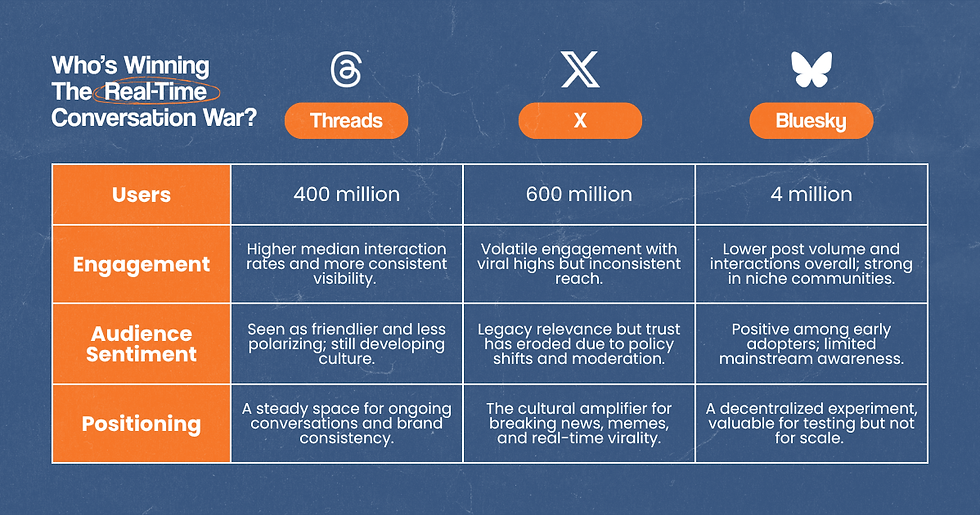5 Tips for Better Business Blogging
- Eric Elkins

- Mar 23, 2017
- 4 min read
Updated: Jun 22, 2020

Let’s be honest—blogging is a pain in the butt. Writing original content on a consistent basis normally takes a backseat to our daily to-do lists, but giving people a reason to come back to your website and establishing yourself as a thought leader is crucial to the success of your business.
When done right, blogging can generate a substantial following and a sense of community, improve your search ranking, and increase your visibility — all to ultimately help your bottom line. And because we’re masters of real-time social media, we know wicked simple tricks to uplevel your blog game in a sustainable way.

1. Be Consistent: Because blogs are a way to interact and communicate with your current and potential customers, it’s imperative that you not only post on a regular basis (at least once per week is preferred, but even a couple times per month is good), but also offer your readers engaging content they can rely on. Humans are creatures of habit, so if you’re publishing blog posts that your readers find useful, they’re likely to come back to your website on a regular basis.
Tip: Create a content calendar and plan out posts to ensure they’re being written and posted consistently. Assign posts and deadlines to other members of your team.

2. Use Google’s Keyword Tool: We understand keyword tools may seem like Marketing 101, but when you’re busting out content regularly, you can easily forget to include words and phrases that people are using when they search for information you provide. In order to schmooze with Google, you have to play their game, and the algorithms are ever-changing (frustrating, we know!). What does stay consistent is Google’s love for relevant content.
And one way to ensure your article gets to the first page of search results is to use Google’s Keyword Tool. This handy tool allows you to search for and use relevant keywords and phrases within your article. You can plug in words and see their search volume (aka popularity), which takes the guesswork out of using terms and phrases that are used by your target audiences.
Remember: Now that more people are using voice to search, they’re using full sentences or questions. Do the same in your copy (Example: “Hey Google, why shouldn’t I hire an intern to do my social media?” becomes this.
Tip: Invest in Google AdWords.

3. Engage Potential Customers: No matter the industry you’re in, you almost certainly use terminology that you and your peers are familiar with. But keep in mind that you also need to reach out to those who may not be privy to your insider lingo.
Once a month, include basic how-to articles on your website; these pieces can hit big because they’re what people are actually searching for in Google. Throw in a “back to basics,” “FAQs,” or “tips” blog post and you might see a healthy spike in website traffic (see the title of this post, for example!).
Obviously, a thought leader like you always wants to be on the forefront of breaking news in your industry, but don’t forget that reaching new clients means making a case for your services or products in ways they can understand.
Tip: To keep potential customers coming back for more, try to post to your blog at the same time and day every week.

4. Use Captivating Images: The average attention span is now 8 seconds, which means you have a short amount of time to make an impression and convince your visitor to stay on your blog. And this is where photos and videos come in handy.
Using photos in your blog posts not only makes readers stick around longer, but also uses space to create the illusion of shorter articles. Short paragraphs paired with captivating images (or gifs!) visually stimulate readers, which keep them on the page longer and increases the likelihood that they’ll check out older blog posts (don’t forget to link to other, related posts in new content!). And don’t forget to include keyword-heavy descriptions when loading images on your website.
Tip: Use Pixaby to find captivating images for free.

5. Be Concise: In this age of immediacy, it’s more important than ever to get your point across…quickly. Try writing short introductory paragraphs and using bullet points instead of lengthy sections. The word count should tend to be around 300-500 words (2-3 paragraphs), but if you’re creative with space and use images to break up the text, your readers will be more engaged with longer posts and will be more likely to share.
Tip: Be creative with spacing and formatting - use bullets, insets, even drop quotes to break up copy.

Does this all still sound like more than you can manage on your own? Luckily for you, we have a team of talented copywriters who can not only plan, write, edit, and post to your blog, but drive readers to it from social channels like Facebook and Instagram. For more information, contact us at info@widefoc.us or click here.
--By Stephanie March
Stephanie March is a Denver native (people seem to like this detail), hates hiking and the mountains, but will travel for a cold PBR and an enlightening convo about the awesomeness of Anais Nin. She’s a senior community manager and specializes in sending semi-inappropriate GIFs to her team members. It’s a skill, people.










